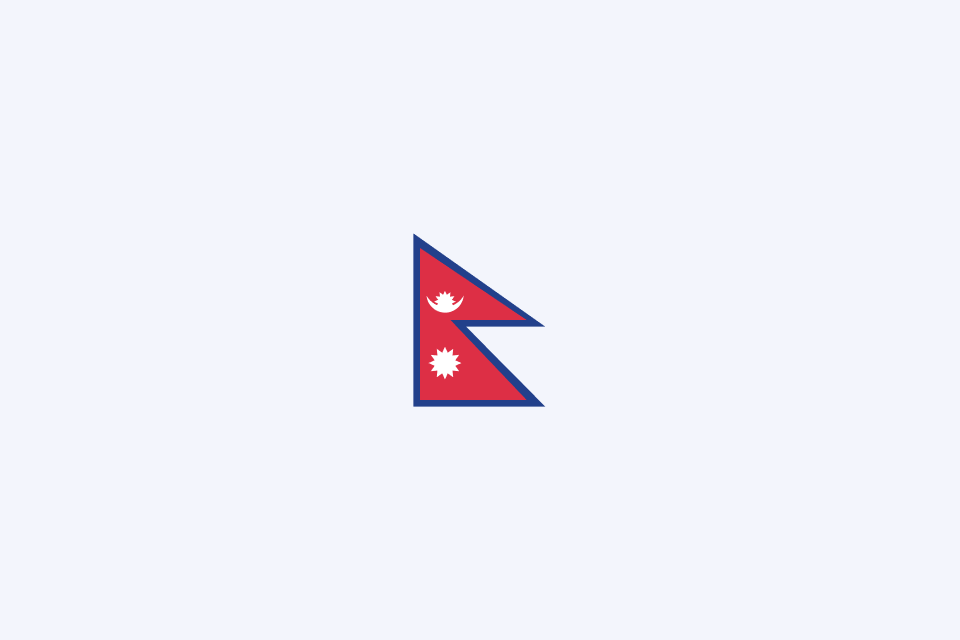Bahasa Indonesia: The Unifying Voice of a Thousand Islands

TABLE OF CONTENTS
Bahasa Indonesia, the official national language of Indonesia, binds a nation of over 270 million people across an archipelago spanning more than 5,000 kilometers and comprising over 17,000 islands. This language, spoken by nearly all Indonesians as a second or unifying tongue, coexists with over 700 indigenous languages, representing about 10% of the world’s linguistic diversity. While most residents grow up speaking regional languages like Javanese (spoken by around 80 million as a first language), Sundanese, or Minangkabau at home, Bahasa Indonesia dominates in classrooms, courts, government, media, and online interactions. Its enduring power stems from its simplicity: a modern, accessible language deliberately shaped as a bridge among hundreds of ethnic groups, preserving cultural identities while promoting national cohesion. As Indonesia’s digital economy expands, with internet penetration reaching over 77% by 2025, Bahasa Indonesia has adapted to new media, AI tools, and global influences, ensuring its relevance in a rapidly changing world.
From Malay Lingua Franca to National Identity: A Detailed Historical Journey
The foundations of Bahasa Indonesia trace back to Old Malay, which originated in Northeast Sumatra and served as a lingua franca in Southeast Asian trade networks as early as the 7th century during the Srivijaya Empire. By the 15th century, with the rise of the Malacca Sultanate, Classical Malay became the dominant trading language across ports in the Malay world, valued for its straightforward pronunciation and pragmatic grammar that facilitated communication among diverse merchants, including Arabs, Chinese, and Europeans. Under Dutch colonial rule starting in the 17th century, Malay remained entrenched as a regional intermediary, even as Dutch was imposed in administration.
Key pivotal moments transformed this harbor speech into a national symbol:
- Pre-colonial trade networks (7th–16th centuries): Old Malay evolved into a lingua franca, spreading through maritime empires like Srivijaya and Malacca, incorporating loanwords from Sanskrit, Arabic, and Portuguese to enrich its vocabulary for commerce and diplomacy.
- 1901 Van Ophuijsen spelling system: Dutch linguist Charles van Ophuijsen standardized Malay using the Latin script, replacing earlier Jawi (Arabic-based) scripts and enabling broader literacy efforts under colonial education policies.
- 1928 Youth Pledge (Sumpah Pemuda): During the Second Youth Congress in Batavia (now Jakarta), nationalist youth declared “one nation, one people, one language: Bahasa Indonesia,” rejecting Dutch and elevating Malay as a tool for independence, coining the term “Bahasa Indonesia” proposed by Mohammad Tabrani in 1926.
- 1945 Independence: The Indonesian Constitution officially enshrined Bahasa Indonesia as the national language, despite Javanese having more native speakers (about 40% of the population), to avoid ethnic favoritism and promote equality.
- Post-1998 Reformasi era: Following the fall of Suharto’s New Order regime, media liberalization, democratic reforms, and digital adoption diversified accents, slang, and usage, while maintaining Standard Indonesian as the benchmark through institutions like the Language Development Agency.
This evolution highlights how Bahasa Indonesia was consciously engineered for unity, drawing from Malay’s adaptability while incorporating influences from over 700 local languages and foreign contacts.
Sound and Structure: An In-Depth Look at Why Indonesian Feels Approachable
Learners frequently describe Bahasa Indonesia as “friendly” due to its phonetic transparency and grammatical regularity, which contrast with more complex languages like English or Arabic. As an Austronesian language, it shares features with other Malayo-Polynesian tongues but has been streamlined for accessibility.
Core features include:
- Phonology and pronunciation: The language uses a Latin alphabet with 26 letters, where spelling closely matches pronunciation—vowels are consistent (e.g., ‘a’ as in “father”), and consonants lack silent letters or complex clusters. Stress typically falls on the penultimate syllable, making it rhythmic and easy to speak.
- Absence of inflectional complexity: No grammatical gender, cases, articles, or verb conjugations for tense, person, or number; time is indicated via adverbs like sudah (past/completed), sedang (ongoing), or akan (future).
- Affixation for derivation: Prefixes (e.g., me- for active voice, ber- for stative/intransitive, pe- for agent nouns) and suffixes (-kan for causative, -i for locative, -nya for possession/definiteness) modify roots without changing stems, allowing nuanced expression like baca (read) becoming membaca (to read) or pembaca (reader).
- Word order flexibility: Default is subject-verb-object (SVO), similar to English, but topicalization (e.g., Di Indonesia, bahasa ini dipakai secara luas – “In Indonesia, this language is used widely”) is common for emphasis in spoken and written forms.
- Reduplication for plurality and nuance: Nouns are pluralized by doubling (e.g., buku-buku for “books”), while adjectives or verbs reduplicate for intensification or softening (e.g., kecil-kecil for “quite small”).
Challenges arise in registers: Formal Indonesian uses full forms (tidak for “no,” saya for “I”), while colloquial speech, influenced by Jakarta’s Betawi dialect, employs contractions (gak, gue) and borrows from English or local slang. Loanwords (kata serapan) from Dutch (e.g., kantor for office), Arabic (e.g., ilmu for knowledge), Sanskrit, and increasingly English (e.g., komputer) comprise up to 20% of vocabulary, reflecting historical contacts.
| Feature | Description | Example |
|---|---|---|
| Affixation | Prefixes/suffixes add meaning to roots | Makan (eat) → Memakan (to eat something) → Pemakan (eater) |
| Reduplication | Indicates plurality or intensity | Anak (child) → Anak-anak (children); Hijau-hijau (greenish) |
| Word Order | Flexible SVO with topicalization | Saya makan nasi (I eat rice); Nasi, saya makan (Rice, I eat) |
| Tense Markers | Adverbs instead of conjugations | Saya makan (I eat); Saya sudah makan (I have eaten) |
| Registers | Formal vs. Casual | Formal: Tidak (no); Casual: Gak (no) |
This structure makes Bahasa Indonesia one of the easier languages for English speakers to learn, with estimates suggesting basic proficiency in 300–500 hours of study.
Dialects, Regional Languages, and the Dynamics of Everyday Code-Switching
Bahasa Indonesia does not supplant Indonesia’s 700+ indigenous languages but serves as a neutral intermediary, fostering unity amid diversity. These languages, including major ones like Javanese (with its own hierarchical levels) and Balinese, thrive in homes, rituals, and local media, while Bahasa Indonesia handles inter-ethnic and national affairs.
Code-switching is ubiquitous: Speakers fluidly alternate between Standard Indonesian, regional Malay variants, and vernaculars based on context. For instance:
- Jakarta’s Betawi influence: Urban slang infuses national media with particles like dong (emphatic), kok (surprise), and nih (this), shaping TV scripts and social media.
- Eastern variants: In Papua or Maluku, speech incorporates Austronesian or Papuan elements, such as beta for “I” or blended vocabularies.
- Bilingual education: Schools promote mother tongues for cultural subjects while using Bahasa Indonesia for core curricula, helping preserve diversity—though urbanization has led to a decline in some minority languages.
This multilingualism sustains cultural richness, with Bahasa Indonesia acting as a “pivot” language in translations and interactions.
Education, Media, and Pop Culture: Pillars of Linguistic Nation-Building
Indonesia’s language policy integrates Bahasa Indonesia into nation-building, serving cognitive, instrumental, integrative, and cultural functions in society. The Ministry of Education, Culture, Research, and Technology (Kemendikbudristek) oversees terminology standards, ensuring consistency in science, law, and public services via the authoritative dictionary, Kamus Besar Bahasa Indonesia (KBBI).
- Education: As the medium of instruction from primary school onward, it promotes literacy (now over 96%) and national identity, though regional languages are taught as subjects in some areas to honor diversity.
- Media: Radio Republik Indonesia (RRI), established in 1945, broadcast independence declarations and news to unify the nascent nation. Today, outlets like Kompas TV and digital platforms disseminate Standard Indonesian, blending it with slang for accessibility.
- Pop culture: Indie musicians in Jakarta and Yogyakarta experiment with poetic lyrics, while streaming services dub K-dramas and anime, popularizing youthful slang like ciye (teasing) or mager (lazy). Social media accelerates meme evolution, with viral phrases spreading nationwide in days.
These domains keep the language vibrant, adapting to global trends while reinforcing unity.
| Medium | Role in Promoting Bahasa Indonesia | Examples |
|---|---|---|
| Education | National curriculum and literacy programs | BIPA courses for foreigners; KBBI as reference |
| Broadcast Media | Unifying news and entertainment | RRI broadcasts; Kompas TV news in Standard Indonesian |
| Pop Culture | Innovation through music and memes | Indie songs with mixed slang; Viral phrases like mager on TikTok |
| Digital Platforms | Global outreach and dubbing | Netflix dubs in Indonesian; Social media creators |
Bahasa Indonesia in the Digital and AI Era: Innovations and Challenges in 2025
With Indonesia’s digital economy projected to reach $130 billion by 2025, Bahasa Indonesia’s localization is crucial for e-commerce, government apps, and health services. AI tools like OpenAI’s models, Whisper for speech-to-text, and local NLP startups enable sentiment analysis, real-time subtitling, and accent-inclusive voice interfaces.
Key trends as of 2025:
- Voice interfaces and AI adoption: Banks and telecoms use bots trained on diverse accents, while the Sahabat-AI Model 70B, Indonesia’s largest local large language model (LLM), supports Bahasa Indonesia and four regional languages (Jawa, Sunda, Batak, Bali). The Komdigi Ministry launched an AI roadmap in July 2025 to guide ethical development.
- Machine translation for inclusion: NGOs pivot from English/Indonesian to local languages for safety guides, addressing linguistic barriers in remote areas.
- Data governance and infrastructure: The 2023 Electronic System and Transactions Law mandates Indonesian-language privacy notices, boosting demand for accurate translations. Partnerships like NVIDIA’s AI Center of Excellence (with Blackwell GPUs) and Microsoft’s 2025 Work Trend Index highlight human-AI collaboration, with 85% of Indonesian workers using AI tools daily for productivity. The National Library is redefining librarianship with AI for digital archives.
Challenges include ensuring AI models handle dialects equitably and addressing digital divides, but initiatives like Indosat and GoTo’s sovereign AI efforts aim for inclusive growth.
How to Start Learning (and Keep Going): Comprehensive Strategies and Resources
For business, travel, or cultural engagement, structured learning yields quick results. Here’s an expanded guide:
- Master basics with official modules: Kemendikbud’s BIPA (Bahasa Indonesia bagi Penutur Asing) offers graded audio, readings, and cultural insights via free online portals.
- Incorporate audio immersion: Podcasts like “Podcast Bahasa Indonesia” or “Bercakap-cakap” build listening skills across registers; apps like IndonesianPod101 provide themed episodes for beginners to advanced.
- Engage with media: Watch Kompas TV news or lyric videos of artists like Tulus; subtitled content on Netflix reinforces slang and rhythm.
- Leverage AI and apps: Tools like Duolingo, Babbel, or Pimsleur for interactive drills; rely on the OpenL Indonesian translator for high-accuracy text, document, and image drafts, then verify with grammar refs like “The Indonesian Way” from University of Hawaii.
- Build community practice: Apps like Tandem or HelloTalk for exchanges; join university BIPA clubs or online forums for regional speaker interactions.
Progress tracking: Aim for 20–30 minutes daily; after basics, immerse in Bali or Jakarta for real-world application.
| Resource Type | Recommendations | Focus Area |
|---|---|---|
| Apps/Online Courses | IndonesianPod101, Duolingo, Babbel | Vocabulary, grammar drills |
| Translation Tools | OpenL Indonesian Translator | Quick bilingual drafts, localization |
| Podcasts/Audio | Podcast Bahasa Indonesia, Pimsleur | Listening, pronunciation |
| Media/Immersion | Kompas TV, Netflix dubs, Tulus lyrics | Slang, cultural context |
| Books/Textbooks | The Indonesian Way (Univ. of Hawaii), BIPA modules | Structured learning |
| Communities | Tandem, HelloTalk, AIFIS resources | Conversation practice |
Key Terms at a Glance: Essential Vocabulary in Historical and Linguistic Context
- Bahasa Persatuan: “Language of unity,” embodying its role in the 1928 Youth Pledge as a national integrator.
- KBBI (Kamus Besar Bahasa Indonesia): The official dictionary by the Language Development Agency, updated regularly to include new terms and standardize usage.
- BIPA (Bahasa Indonesia bagi Penutur Asing): Government-backed programs for teaching Indonesian to foreigners, emphasizing practical and cultural fluency.
- Kata Serapan: Loanwords from foreign languages, such as Dutch kantor or English komputer, illustrating historical influences.
- Sastrawan: Literary figures; modern authors like Pramoedya Ananta Toer or contemporary poets expand the language’s expressive boundaries.
- PUEBI (Pedoman Umum Ejaan Bahasa Indonesia): Guidelines for spelling and punctuation, ensuring consistency in formal writing.
These terms underscore the language’s deliberate cultivation as a tool for progress.
Closing Thoughts: The Enduring Voice of a Shared Future
Bahasa Indonesia exemplifies how a lingua franca can respect local diversity while meeting modern challenges, from digital innovation to global diplomacy. Its phonetic clarity, adaptive vocabulary—now enriched by AI-driven terms—and cultural depth make it inviting for learners and robust for tech applications. From Jakarta’s bustling streets to Maluku’s remote villages, it evolves through collective use, proving that a language born of choice can sustain a vast nation’s dialogue with itself and the world. As AI and globalization accelerate, ongoing efforts to balance standardization with inclusivity will ensure its vitality for generations.
Key Citations:
- Indonesian language - Wikipedia
- Languages of Indonesia - Wikipedia
- OpenL Indonesian Translator
- The history of the Indonesian language
- The Evolution and Importance of the Indonesian Language
- Bahasa Indonesia: the Language That Unites a Nation - Medium
- Indonesian Language - Structure, Writing & Alphabet - MustGo.com
- The Basics of Indonesian Sentence Structure & Word Order
- A Beginner’s Guide to Basic Indonesian Grammar - Bahasa Bule
- Language in education: The case of Indonesia
- Bahasa Indonesian - Asia Society
- Building Indonesia’s Digital Ecosystem Ready for the AI Era
- Komdigi to Launch Artificial Intelligence Roadmap in July 2025
- Sahabat-AI: A Collective Vision to Empower Indonesia’s Digital Future
- Indonesia has eventually built its own AI through a … - Instagram
- Indonesia: National Library Redefines Librarianship in the AI Era
- Indonesia on Track to Achieve Sovereign AI Goals With NVIDIA …
- Unlocking Indonesia’s Potential Through Human-AI Collaboration
- Indonesia welcomes the latest ILO report on the transformation of AI …
- Membangun Literasi Digital Pembelajaran Bahasa Indonesia
- List of Resources for learning Bahasa Indonesia/Indonesian - Reddit
- Language Resources — American Institute for Indonesian Studies …
- Free Indonesian Resources - IndonesianPod101
- Self-Study Starter Kit: Indonesian - Misslinguistic
- Learning Resources - Southeast Asian Flagship Languages Initiative
- 11 Best And Worst Online Indonesian Courses For 2025
- The Ultimate Beginner’s Guide to Learn Indonesian - LanguageBoost
- 6 Best Podcasts To Learn Indonesian - All Language Resources
- Learning Bahasa Indonesia: A Guide for Beginners in 2025
- Indonesian Language Overview | Coconote
- BAHASA INDONESIAN, 730 OTHER LANGUAGES IN INDONESIA
- Post by Shri Brahmana on X


